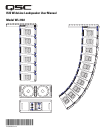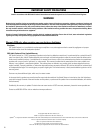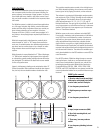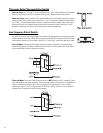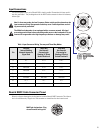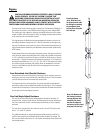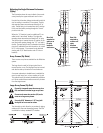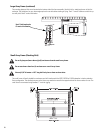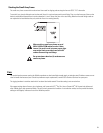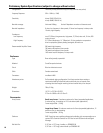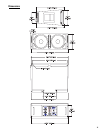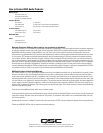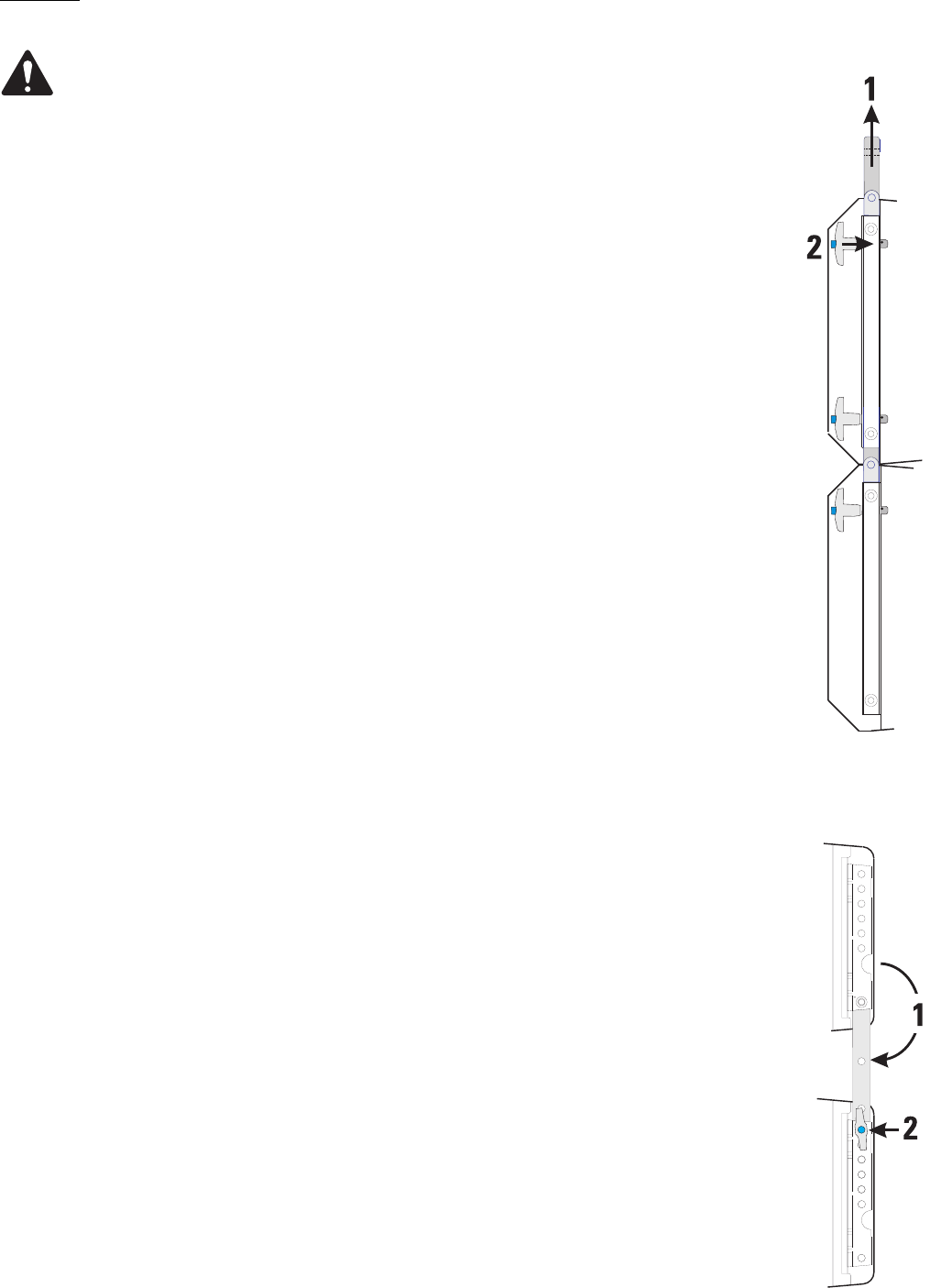
6
Rigging
CAUTION: SUSPENDING SPEAKERS PRESENTS A RISK OF SERIOUS
INJURY OR DEATH. PLEASE USE CAUTION TO ASSURE THAT
MOUNTING SURFACES ARE CAPABLE OF SUPPORTING AT LEAST
FIVE TIMES THE WEIGHT OF THE SPEAKER AND MOUNTING APPARATUS.
USE ONLY LOAD RATED HARDWARE. ALWAYS CONSULT WITH A CERTIFIED
PROFESSIONAL WHEN IMPLEMENTING OVERHEAD SUSPENSION.
The large array frame’s maximum array is twenty-four (24) enclosures. Weight of a
twenty-four box system is only 1680lbs and the large array frame weighs 83lbs.
The small array frame supports a maximum of eight (8) enclosures with a system
weight of 420lbs. and frame weight of 33lbs. The rigging hardware does not allow
array assembly with any enclosure inverted.
The rigging system for WideLine has been engineered to achieve a minimum of
the industry standard strength ratio of 5:1 with 24 enclosures on the large array
frame or 8 enclosures on the small array frame. Palos Verdes Engineering has cer-
tified the mechanical calculations, and destructive tests have been performed by
ATM Flyware.
WideLine enclosures use a three-point suspension system. The system consists of
front, left/right, captive articulated joints and a single rear link blade. Articulation
is in 2° increments using the first location on the link bar. With the use of the sec-
ond location, 1° degree increments can be obtained starting at 3°. The total avail-
able angular increments are: 0, 2, 3, 4, 5, 6, 7, 8, 9, and 10°. All pieces and locking
pins remain with the enclosures. No ancillary items are needed to fly the enclo-
sures from the WideLine grid. All ball-lock pins are equipped with a lanyard to
help prevent loss.
Front Articulated Joint (Knuckle) Hardware
Expose the end of the articulated joint by locating the joint’s retaining screw pro-
truding from the front of the receiver tube and sliding it upward. The front captive
joint will slide upward from the enclosure’s receiver tube.
The exposed end of the articulated joint can now be inserted into the adjacent
enclosure’s receiver tube and locked into position by a locking pin. This is repeated
for each side of the enclosure. Then the rear link blade can be rotated into position
and pinned at the chosen degree increment.
Rear Link (Angle Adjust) Hardware
The rear link is stored with the link folded between the sides of the block. To
expose the link, remove the ball-lock pin and rotate the link into the desired posi-
tion. Once positioned, the link is secured using the ball-lock pin of the adjacent
enclosure.
The rear link is marked with a thin, white line at the “normal” (0°) position and
with a “+3” at the +3° position.
The additional ball-lock pin hole (located approximately midway on the link) is
used for storing the link when folded into the enclosure’s block for storage. The
link may be pinned in place at the 0° or 8° location on the block when rotated into
the storage position.
Front Articulated
Joint- Slide the joint
out of the receiver tube
by sliding the retaining
screw upward, then
lock in place using the
ball-lock pin.
Rear Link-Remove the
ball lock pin from the
storage position, then
rotate the link down-
ward to the adjacent
enclosure. Lock in place
using the ball-lock pin.



